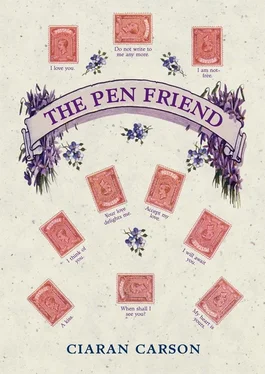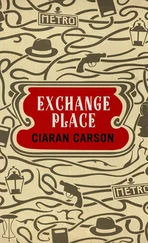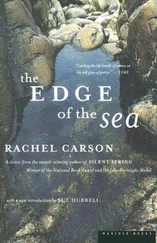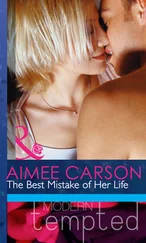As I pondered your card and its manifold implications, I began to think of myself as an angler fishing a stretch of canal in the shadow of a dark semi-derelict factory leaking steam from a rusted exoskeleton of piping, who, after hours of inaction, feels his line bite, and, his excitement mounting, begins to reel in as his rod is bent by the gravity of what must be an enormous catch — a whale of a pike perhaps, glutted by its meal of barbel, perch, or one of the plump rats that scuttle through the soot-encrusted weeds of the canal banks — when to his consternation he finds he has snagged a smoothing-iron, which he discovers to be only the precursor of a series resembling a gargantuan charm bracelet dripping green-black beards and tendrils of slime, as the iron is followed by a sewing-machine, an ironing-board, a shopping trolley, a tangle of barbed wire, bits of corrugated iron fencing, rusted automatic weapons, a wire mesh security shutter, and a string of police motor-cycles, like stuff spewed from the maw of some legendary behemoth, a galleon or two with their full complements of cannon, barrels of biscuit and nail and wine and shot and oil, cases of carpenters’ tools and swords and needles and astrolabes and viols and pistols and flutes and crucifixes, and I still had not got to the bottom of your message.
Another detail besides the wax seal was discovered during the restoration of the Vermeer. Before its return to Ireland, the painting had been stored in Antwerp, where O’Connor was working on it when he was visited by Jorgen Wadum, conservator in the Mauritshuis in The Hague. Wadum had long been dissatisfied with the theory that Vermeer used a camera obscura to achieve his almost photographic perspectives. When he examined Lady Writing a Letter with Her Maid he found a pinhole at the centre of the writing woman’s left eye. On an impulse he fished in his bag, found a piece of string, and, holding one end to the eye, ran the string along the various lines of perspective. The lines met at the pinhole. Vermeer, he immediately conjectured, had rubbed chalk on a string, snapped it onto the canvas, and used those lines as a guide. And when I fish out a Perspex ruler from my drawer and try the same experiment, I find that it is so. The woman’s eye is concentrated on her writing, yet radiates invisible lines out into the room and beyond the window of the room, embracing the outside world to which her letter soon will be delivered, and, imagining the faint whisper of her quill upon the paper, I see you sitting in a Berlin café, perhaps, writing this card to me, All manner of service in the field , and I think of me fixed in your inner eye as you write my name and address on the card, Gabriel Conway, 41 Ophir Gardens, Belfast …
I turned to Exodus again, and found the source in Chapter 1. Verses 13–14 read, ‘And the Egyptians made the children of Israel to serve with rigour: And they made their lives bitter with hard bondage, in mortar, and in brick, and in all manner of service in the field’. I took this to be an ironic reference to what you did. You described yourself as a Field Officer, Nina, though the bondage, I assumed, was voluntary. And what exactly is your field? I’d asked you. Well, it’s more like the field, you said. The field of information, you said, the field of enquiry, if you will, though of course we all have our own field. Like a spy ring, I said jokingly. Like a spy ring, you said, though we’re perfectly open about what we do. The best place to hide a thing is in full sight, you said. The early Mass Observation surveys were criticised because of their seemingly covert methods. The lower classes felt they were being spied upon by the upper. In MO2 we gather information, yes, but it’s no different from the kind of information anyone would gather in the course of their work, be they postmen or publicans or seamstresses or clerks or whatever. Every job implies a field of social and economic relationships.
As for my job, well, I spent a good few weeks looking out the window, you said. They’d given us the top floor of an old linen warehouse in Bedford Street, you know, at the back of the City Hall. My room overlooked the street, five storeys below, and I used to amuse myself by tracking the pedestrian traffic — people-watching, if you like. Monitoring the flow, the little knots and eddies, accidental encounters, people bumping into each other in the street, I’d see their backward steps of surprise, and imagine them saying, How are you, I haven’t see you for years, what have you been doing? And I took a special interest in people window-shopping. You know Lazenblatt’s antique shop, beside the Ulster Hall? you said. Yes, I said, those terrible Irish landscapes, The Bridge at Cushendun, Fair Head on A Summer’s Day , that kind of thing. But he’s got some nice stuff, too, though a bit outside my price range. I’d seen a snuff-box there the other week that Beringer was selling for half the price. Anyway, you said, I’d watch Lazenblatt’s over the course of a day, see who would stop at the window, while others wouldn’t give it a second look. There was one guy I remember, oh, dressed a bit like you, Gabriel, nice Donegal tweed jacket, green and grey fleck, good brogues, he stopped one morning and looked in the window for about five minutes, then he was back later in the afternoon, looked in the window again for quite a while. And the next day, the same thing, and the next. It took him four days to go into the shop, and then he came out empty-handed. Unless, of course, he’d bought something small, some kind of trinket, maybe a watch for himself, maybe a brooch for his girlfriend, who knows? and it was in his pocket.
Then again I’d sometimes look across the way, there was a building with an office floor just below my eye-level. There was one office, man at a desk, grey suit, every morning about eleven he’d take a chair and place it opposite his on the other side of the desk, then a secretary would come in, she’s in a grey suit too, except with a skirt, knee-length, hair in a bun, he’d gesture to her to sit down, she’s got a notebook ready, and he’d dictate to her. When you said this, I thought of the rapid whisper of her shorthand pen, and visualised an Edward Hopper scene, sunlight falling into an almost empty room. Office in a Small City , 1953, perhaps.
I could see his lips moving, you said, and we must have then discussed the various surveillance devices which were known to be in use throughout the city. The laser voice interceptor, specifically, which I’d learned about from McWhirter, you met him once, the computer buff at the Gallery, they’d brought him in to develop a cataloguing system, very advanced stuff for 1982. It’s really very simple, said McWhirter, like everything else we think is new, the Victorians had a version of it, they called it the photophone. It’s really a telephone, except you use light instead of electricity to project the information. Alexander Graham Bell, he hooked up a mouthpiece to a diaphragm that’s a mirror, so it vibrates to the sound of a voice, and that modulates a beam of sunlight aimed at the diaphragm by another mirror. Then you get a photovoltaic cell and an earpiece, that’s your remote receiver, you position it in the beam, and away you go. The sound comes over the light-beam.
And as McWhirter told me this I remembered manipulating a piece of mirror glass as a boy to dazzle the eyes of neighbours, aiming the blip of light through the windows of rooms to dance mysteriously across the walls and ceilings.
Of course, said McWhirter, it was very weather-dependent. No sunlight, no communication, and I imagined rain-spattered voices flickering and fading as a scud of April cloud passed overhead, and thought that dust-motes falling through the beam might produce a background drizzle like that on old cylinder recordings. Then, in the Sixties, said McWhirter, Bell Laboratories — quantum electronics chap, Charles Towne — developed the laser. Acronym. Light amplification by stimulated emission of radiation. Ordinary light’s like white noise, the photons are all over the place. But your laser releases all the photons in one direction, at one frequency. It’s a sine wave, pure, coherent tone. Beam of tightly packed light, razor-sharp, nearly incorruptible. Like a magic wand. Point it at a window. The window is your diaphragm, you see. And the room’s an acoustic chamber. The sound waves generated by conversation will cause the glass in the window to vibrate ever so slightly. If you bounce your laser beam off the window, the reflection gets modulated by the vibrations. Then all you need to hear what’s being said is some kind of demodulating thingamajig to extract the audio from the reflected laser beam. And there you have it. Your laser voice interceptor. Mind you, it’s not one hundred per cent perfect. Proximity of fluorescent lights, neon, sodium, might cause a buzz, that kind of thing. Air currents, strong winds, you get an effect like blowing into a mike. And direct sunlight can swamp the beam. But you’d be surprised at what you can hear from a couple of hundred feet away. And beyond that, well, you can hook it up to a telescopic gunsight, mount it directly on to the laser housing. Pretty accurate for a mile or two, said McWhirter. And you really think they’re using this device in Belfast? I said. McWhirter looked at me over his glasses and gave me a pitying smile. What do you think? he said.
Читать дальше












